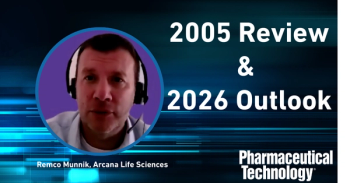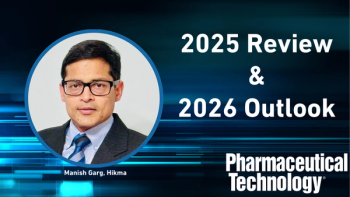
Equipment and Processing Report
- Equipment and Processing Report-01-20-2010
- Volume 0
- Issue 0
Biopharmaceutical Manufacturers Look for Flexibility
Could flexible manufacturing change the standards for biopharmaceutical production? To find out, Equipment and Processing Report talked to James Robinson, vice-president of technical and quality operations at biotechnology company Novavax (Rockville, MD).
For small companies seeking to produce biopharmaceuticals or vaccines, the capital expenditures required are often daunting. Financing is especially difficult to obtain in the current economy. To reduce costs, some small companies and contract manufacturers have turned away from fixed equipment and adopted flexible manufacturing systems. These companies have discovered that flexible manufacturing also has benefits for production and regulatory compliance. Large biopharmaceutical manufacturers are beginning to take notice. Could flexible manufacturing change the standards for biopharmaceutical production? To find out, Equipment and Processing Report talked to James Robinson, vice-president of technical and quality operations at biotechnology company Novavax (Rockville, MD).
EPR: How do you define “flexible manufacturing?”
Robinson: When we use the term “flexible manufacturing,” we refer to single-use systems that can be rearranged for multiple manufacturing programs. Single-use systems are generally portable when not full of product, and such unit operations can be reorganized based on a specific product need. Reorganization is challenging with fixed equipment and stainless-steel piping networks.
We also use the term “modular manufacturing” at Novavax, which refers to the concept of designing, qualifying, and validating a production module—including all unit operations necessary to produce a product—once and duplicating it in multiple facilities or locations.
EPR: What are the production advantages of a flexible manufacturing facility for the biopharmaceutical industry?
Robinson: With fixed equipment, each facility and its supporting infrastructure are unique, and it is difficult, if not impossible, to make exact copies. Flexible equipment allows us to expand capacity by adding cell-culture modules for increased throughput without having to reengineer the entire process. We can design a facility that manufactures 50 million doses of influenza per year with one or two reactors supported by a single downstream process train. Adding two reactors allows the capacity to be doubled with only the added cost of the reactors. Capacity is further increased by duplicating the entire production module.
If a process can be designed to use only single-use systems, a significant amount of facility infrastructure can be avoided. Fixed equipment requires miles of piping and hundreds of valves and process controls to maintain the cleanliness and sterility of equipment for reuse. Flexible manufacturing systems allow a company to shrink the plant and its cost by using less equipment, piping, valves, and controls. They focus the company’s investment on the manufacturing equipment itself.
Reduction in facility complexity speeds the design and validation of a facility. Reduction in complexity also greatly reduces the risk of project delay and cost overruns. When Novavax commissioned a conceptual facility design for an influenza-manufacturing plant, we were given an estimated cost of $40 million to support a 75-million-dose/year bulk-manufacturing facility. The two newest facilities in the US, which perform at a similar scale, are reported to have cost $150 million and $600 million. In addition to the lower cost, we predict a project timeline of less than two years, compared with the four- to five-year plans for these other facilities.
EPR: When would a flexible manufacturing facility be undesirable?
Robinson: Some processes are not supported by single-use systems today. If you require a homogenization step or strong solvents, for example, or if the process is low-yield, and therefore high-volume, the systems could be limiting. In addition, if your process cannot be 100% single-use, your company will need to invest in the added facility infrastructure—such as clean-in-place and sterilize-in-place systems—and the longer validation times associated with traditional plants. You can minimize the impact of these systems and still gain the lower level of complexity in many of your systems, but not the full benefit of the financial or time savings.
EPR: Can you offer a specific example of a flexible manufacturing operation in effect from your own work in the industry?
Robinson: Novavax has developed a 100% single-use process for the manufacture of its influenza vaccine using recombinant viruslike particles. The result is that we can build a facility for a fraction of the cost and in half the time of a traditional flu facility. We can do this because of the high yield and low biosafety level of our baculovirus manufacturing platform. We have been able to avoid processes that are not available in a single-use format such as ultracentrifugation, which is often used in egg-based influenza-vaccine production.
EPR: Is flexible manufacturing limited in terms of scale?
Robinson: The largest bioreactor available today holds 2000 L. In about five years, we expect 5000-L reactors to be available. This scale would satisfy the majority of vaccine-manufacturing processes that exist today. The downstream technology is a little more limited as volumes increase, although new technologies now are being developed for moving and processing high flow rates with single-use systems.
EPR: Do you foresee Big Pharma adopting flexible manufacturing in the near future?
Robinson: Big Pharma has been slow to adopt these technologies so far. These companies’ traditional infrastructure is already in place and validated, and many manufacturers believe that the cost of changing processes would be higher than continuing to use their current equipment. The new technology also may seem risky to some big companies.
I believe that the value gained in time savings for new capacity and the flexibility of this technology for multipurpose facilities will incite organizations to adopt these technologies over the next five to 10 years as new products replace existing products in their portfolios.
Articles in this issue
almost 16 years ago
Large-Scale Protein Production with a Cell-Free Systemalmost 16 years ago
January 2010 Editor's Picks: Products from Malvern and OYSTARNewsletter
Get the essential updates shaping the future of pharma manufacturing and compliance—subscribe today to Pharmaceutical Technology and never miss a breakthrough.




